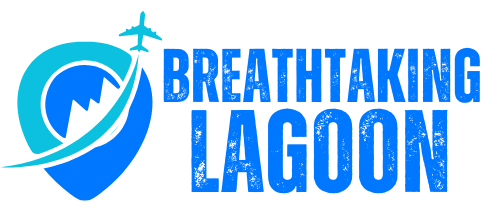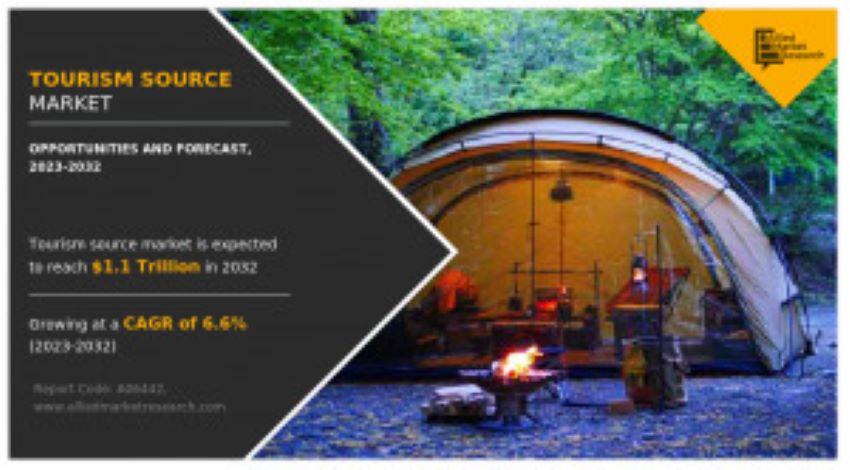Published on October 16, 2025
By 2032, the value of the global tourism source market is expected to grow to around USD 1.1 trillion, nearly double that of USD 599.40 billion in 2022. This is expected to grow at a compound annual growth rate (CAGR) of 6.6% from 2023 to 2032. With the increase in travel, demand for new trends, such as the ability to book travel via mobile applications and the increased interest in eco-tourism, is predicted to boost growth in the sector.
Traveling for leisure, recreation, business, or culture is a growing industry and a unique cultural, social, and economic challenge. People travel for tourism all over the world, and the market is now able to adapt to new trends. Eco-tourism and demand for sustainable tourism that is also culturally rich and immersive are on the rise, and numerous countries are becoming global eco-tourism destinations.
Advertisement
Advertisement
The Impact of Apps on Travel and Tourism
The rising use of mobile applications is a major factor for source market tourism. As of 2022, most bookings made for travel itineraries came from mobile applications, and that trend is likely to continue. Apps are a game-changer for travelers. Apps make the process of selecting and booking a trip much simpler. They help travelers book flights, find accommodations, and sign up for activities and tours. For many travelers, the use of apps to plan and book a trip is the most convenient option.
Part of the appeal of mobile apps is that most travelers can use them to plan and book every aspect of their trip from start to finish. Apps that help with travel decisions and simplify bookings have become a must-have in the mobile tourism market.
Core Elements that Propel Tourism Source Markets
Advertisement
Advertisement
There are several major elements that are contributing to the growth of the tourism source market. One of the primary drivers of growth is the increasing eagerness of travelers to explore and discover new and different places around the globe. An increase in adventure tourism, eco tourism, and cultural immersion activities is are trends that attract travelers to seek more genuine and authentic experiences that are less mainstream.
Iceland, Kenya, Palau, and Nepal have become popular destinations for eco-tourism, with many people wanting to see beautiful natural areas and learn about different cultures. Tourist numbers grew by 24% in Nepal in 2018, for example, to more than 1.1 million. Kenya also increased the number of tourists in 2018 by 37%, to over two million.
Countries with a lot of natural resources and ecosystems for wildlife or rainforests to use for nature tourism are very popular for eco-tourism. For example, Costa Rica, the Galapagos Islands, and Panama are great places to visit for wildlife watching and enjoying nature in its pristine state.
Challenges and Constraints to Tourism Growth
The tourism growing source markets are, for the most part, unstoppable, but there are obstacles that may slow down this growth. For tourist destinations, one of the main issues is accessibility. By not having the right types of infrastructure set up, like poorly designed transportation networks and a lack of airports or ports, a tourist destination’s appeal may drop tremendously. To a lesser extent, poorly designed tourist accommodations or simply having a limited number of places to stay may drop that destination’s attractiveness.
Risks such as badly kept roads and bridges can cause travel dangers. Unattended travel infrastructures can lead to unsecured travel to these places and add to the places’ tourism risk.
Nonetheless, the challenges are believable. However, the overall tourism source market is still positive because the challenges are still manageable, places are still innovating and growing.
Local and International Tourism Growth
An especially growing area for tourism source markets is national parks, historical places, and cultural celebrations. Many tourists are focused on visiting new and unfamiliar places. The demand for travel to lesser-known places is leading to the creation of travel products and services, especially in the areas of ecotourism and adventure tourism. Creating products to meet demand in these markets is very manageable.
One of the most efficient ways to market new places is social media, where travel stories and new destinations are posted. The greater the demand for products in the tourism market, the easier it is for new products to be created. The greater new places visible on social media, the greater the demand for new products and experiences. Overall, the demand for tourism grows as new places gain greater demand.
Segmentation of the Tourism Source Market
Segmentation of the tourism source market can be analysed across different booking channels, tourist profiles, and geographical regions. Based on the available channels, the market can be segmented into travel websites, mobile applications, travel agencies, and others. Of these, mobile applications are predicted to continue their dominance as more and more consumers prefer digital options for travel planning.
When considering the different types of tourists, the grouped segment dominated the global market and will continue to do so within the forecast period. Most leisure and business travel is still organized in large groups, as tourists prefer to travel together and join organized tours for destination explorations.
In 2022, Europe was the most dominant region of the tourism source market, and it will continue to be so until 2032. While the Asia-Pacific region and North America will see the most growth, as tourism in these developed and emerging markets will increase.
Regional Insights and Trends
Europe hosts the largest tourism market, and this will continue to be the case, as the region boasts a large array of attractions consisting of rich cultural and historical features, as well as beautiful landscapes. Year after year, France, Italy, and Spain bring in millions of global tourists, and the recent years have also seen Eastern European countries become more popular.
In the Asia Pacific area, nations such as China, Japan, and India are experiencing an upswing in both international and domestic tourism. More individuals are traveling for business and leisure purposes as the middle class expands and disposable incomes increase, and this promotes the expansion of the tourism source market.
Conclusion
Given the burgeoning interest in unique travel experiences, the popularity of eco and adventure tourism, and the rapid growth of mobile booking technologies, the global tourism source market, estimated at USD 1.1 trillion in 2032, seems within reach. The growth of the market will continue, despite safety and infrastructure challenges, as travelers pursue under-explored destinations and enriched cultural experiences. Destinations will need to respond to this growth by improving their offerings and infrastructure.
Advertisement
Tags: asia-pacific, china, Europe, france, Global
Advertisement
Tags: asia-pacific, china, Europe, france, Global
I want to receive travel news and trade event update from Travel And Tour World. I have read Travel And Tour World’sPrivacy Notice.
Thursday, October 16, 2025
Thursday, October 16, 2025
Thursday, October 16, 2025
Thursday, October 16, 2025
Thursday, October 16, 2025
Thursday, October 16, 2025
Thursday, October 16, 2025
Thursday, October 16, 2025




